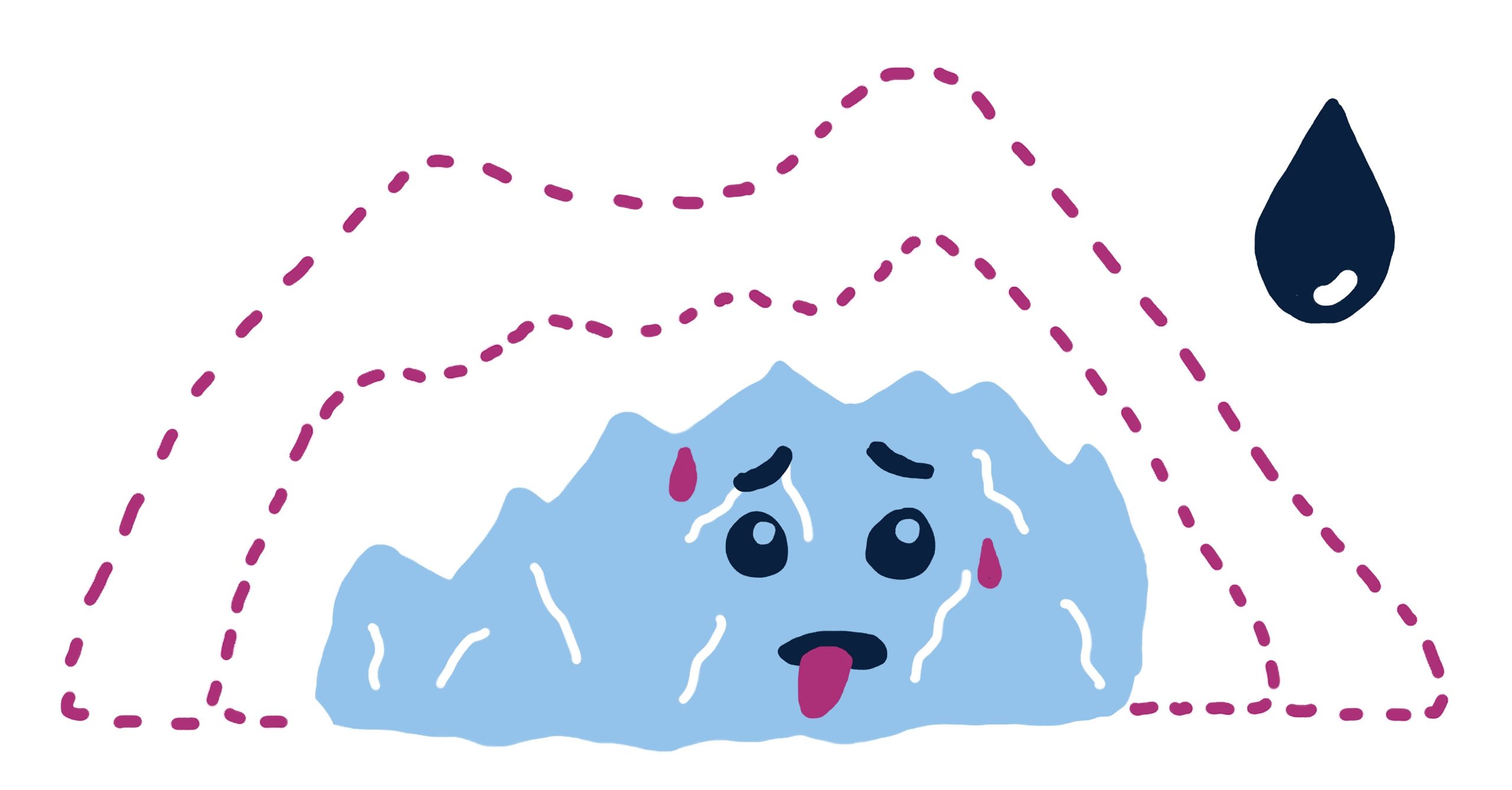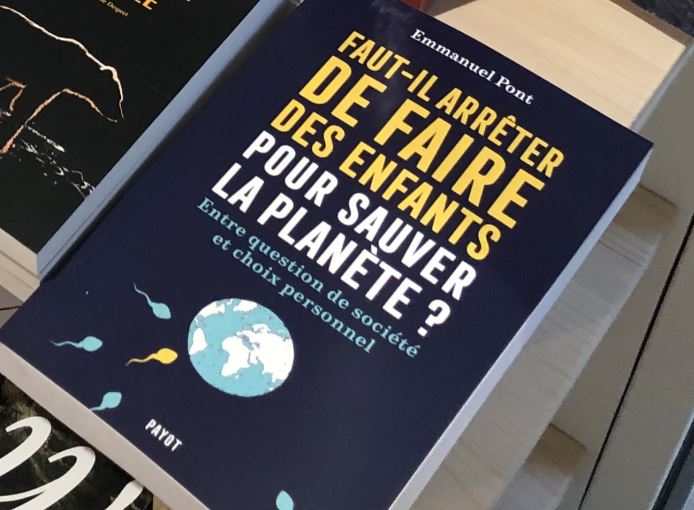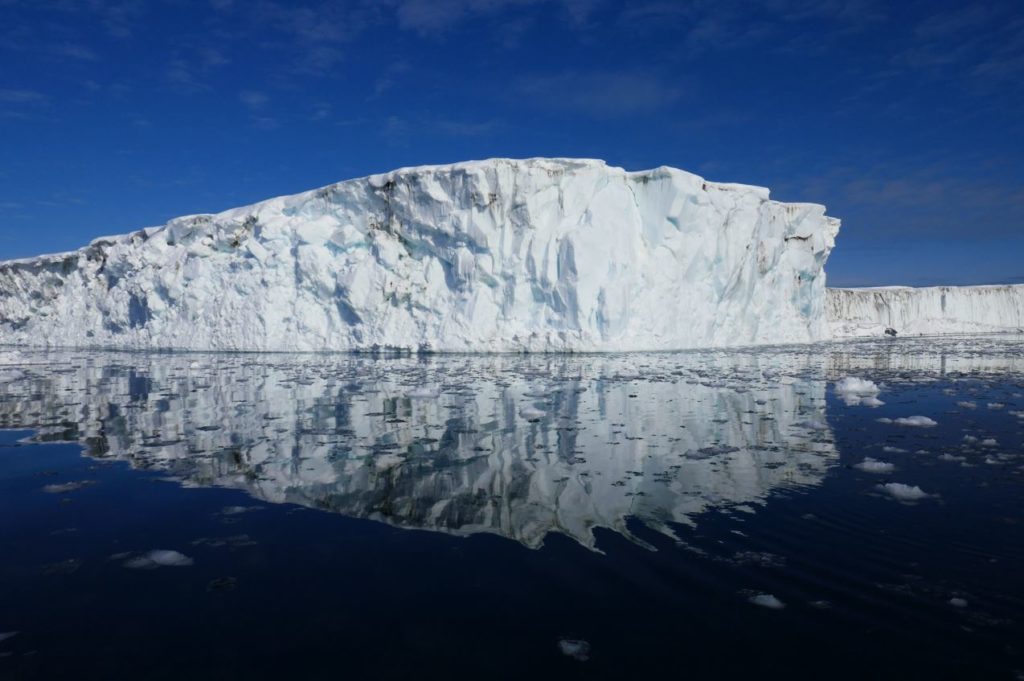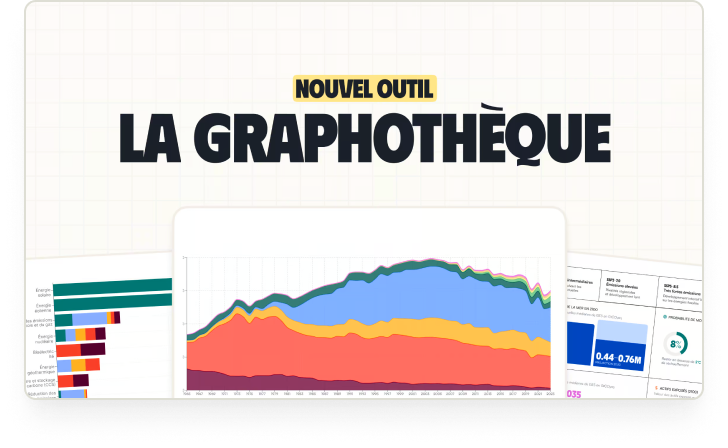Climate myths still remain and persist in the public sphere. Given the climate emergency, and in partnership with the National Institute of Sciences of the Universe (INSU), we would like to demystify some cliches about climate change and propose instead scientific knowledge to a wider audience.
With misinformation rampant about the impacts of climate change on glaciers, we couldn’t ignore this important subject.
Glaciers are large accumulations of land ice. They form in areas where snow falls year-round and in enough quantity to accumulate and transform to ice. The Earth has more than 200,000 continental glaciers. We aim to answer recurring questions, such as: how do we measure the evolution of glaciers ? How do we know about their past condition ? Have they always been larger than today ? And finally, is it correct to say that humans are causing glacier retreat ?
To answer these questions, we have received the precious help of five scientists, authors of an exclusive review of the most recent research on glaciers:
- Vincent Jomelli, CNRS researcher at the European Centre for Research and Teaching in Environmental Geosciences (CEREGE).
- Melaine Le Roy, researcher at the University of Geneva, Institute of Environmental Sciences (ISE, C-CIA) and University of Savoie, Laboratory for Mountain Environments, Dynamics and Territories Presentation (EDYTEM)
- Samuel Morin, researcher at Météo France at the National Centre for Meteorological Research (CNRM) and IPCC author.
- Antoine Rabater, researcher at the University of Grenobles Alpes at the Institute of Environmental Geosciences (IGE).
- Pierre Valla, CNRS researcher at the Institute of Earth Sciences (ISTerre)
NB: you can read our first two articles here:
– Has the scientific consensus on climate change reached 100 %?
– Has there been climate change before?
How do we measure the evolution of glaciers ?
The mass balance
Glaciers are made up of ice that slides from the mountain tops to the valleys. According to their geometry (size, slope, altitude, shape of the basin, etc.), the position of the frontal part moves at an extremely variable pace (from a few to more than 1000 years) compared to the long-term variations of the climate. Therefore, to understand the links between climate and glaciers, it is crucial to measure and analyze not only the visible part, but the surface mass balance of the entire glacier at decadal scales to find an overall trend. The surface mass balance is the gain or loss of snow/ice, expressed in the volume of water that would be obtained from melting said snow or ice.

Issued from Figure 2 of Beniston et al., 2018, The Cryosphere, 12, 759–794, 2018 https://doi.org/10.5194/tc-12-759-2018
Retreat and advance of glaciers
Changes in total mass balance stem from surface processes (accumulation and ablation) and the dynamic response of the glacier. Net accumulation (the mass balance is positive) means that the glacier is advancing because the position of the front of the glacier extends towards the valley. However, with net ablation, the glacier retreats because the front of the glacier moves towards higher altitudes. Studies carried out in the Alps show that, although there is a high degree of interannual variability, there is no multi-decadal trend in snowfall accumulation at high altitudes. In contrast, ablation, which is mainly a consequence of snow or ice melt, has been increasing in recent decades.
Longer melting seasons and more intense melting during the middle of summer explain this trend. Furthermore, the rise in temperature increases the fraction of precipitation that falls as rain, which diminishes the ability of the glacier surface to reflect solar radiation (albedo).
The largest glacier in the Alps, Grosser Aletschgletscher, as seen from Belalp | 1856 to 2020 pic.twitter.com/9TIOn5chjx
— Melaine Le Roy (@subfossilguy) October 14, 2020
How do we know about their past states ?
We can date some fluctuations
Concerning past fluctuations, for periods preceding historical records (such as aerial photography of the middle of the 20th century, miltary maps during the 19th century…), it’s possible to map and date some glacial advancements studying rock deposits from glaciers called moraines.
It’s difficult to reconstruct a reliable and complete chronology of glaciers’ fluctuations
Furthermore, the magnitude of intermediate fluctuations between two moraine stages is difficult to reconstruct. That’s because the traces are erased by the most recent advances when they exceed the previous ones. The Little Ice Age, that occurred from the early 14th century through the mid-19th century, was, in many parts of the Northern Hemisphere, the most important glacial advance since the second half of the Holocene (the geological epoch starting about 12,000 years ago). This makes it difficult to identify past fluctuations. Although we know a lot about the advancement of glaciers, in most cases, it remains challenging to reconstruct a continuous, reliable and precise chronology of the extent of glacier retreat over the last millennia.
But our knowledge is growing
Yet there are some places (in situ wood fossils, lake sediments…) containing data to document the extent of glacial variations during the last millennia, define the positions reached during past retreats. In addition, in situ cosmogenic isotope* dating methods are beginning to provide interesting information about these glacier fluctuations. They require rock sampling from areas that are now deglaciated. Therefore, when glaciers retreat, we are able to tell if these deglaciated areas have experienced past retreats. While we can measure how long the rock has been exposed to the air, we are not yet able to calculate how many times it was exposed.

Author : Melaine Le Roy
Have they always been larger than today ?
Compared to today, the surface covered by glaciers has significantly changed. But this evolution varies a lot on the regional scale: In some regions (mostly in the Southern Hemisphere), there is little evidence that glaciers ever witnessed greater shrinkage than today. However, in other regions (mostly in the Northern Hemisphere), there were glaciers that have witnessed greater shrinkage during the Holocene climatic optimum than today (between 10,000 and 5,000 years ago).
In the Alps, during the last ice age, which peaked around 20,000 years ago and ended around 12,000 years ago,
- They covered most valleys and spread as far as Lyon.
- After the glacial period peaked, glaciers witnessed an important shrinkage that lasted till the Holocene climatic optimum. Back then, they were even smaller than they are today.
- In Roman times, glaciers also covered relatively small areas, probably close to their current extent, if not smaller. However, glacial cores sampled at very high altitudes (> 3500 m) in the Mont Blanc massif show that the massif was probably not entirely deglaciated during the Holocene.
- The second half of the Holocene (named Neoglacial) witnessed several cold episodes accompanied by glacial advances, including the “little ice age”. This period that occurred from the early 14th century through the mid-19th century, witnessed the most important glacial expansion of the Neoglacial age. Other Neoglacial advances are usually dated between 2500 and 4000 years ago.
Since the end of the 19th century, the world’s glaciers have been losing mass and shrinking. Thanks to several scientific studies analyzed by the IPCC we can affirm, with a high degree of confidence, that glaciers in almost all regions of the world have continued to shrink.
NEWSLETTER
Chaque vendredi, recevez un condensé de la semaine, des infographies, nos recos culturelles et des exclusivités.
ALERTE
Une alerte dans votre boite mail, pour être mis au courant dès qu’un nouvel article est en ligne sur Bon Pote
And finally, is it correct to say that humans are causing glacier retreat ?
Glaciers have experienced natural fluctuations over the past centuries and millennia, and the losses of mass were probably close to those observed today. But the time scales and extent of current variations are far from those observed during the rest of the Holocene.
- The most important losses of ice are recorded at mid-latitudes and in the subpolar zone. For the last two decades, glaciers in the Alps, In Patagonia or even as far north as those of Kerguelen Islands,Alaska and Iceland have lost on average around 1m/year of water equivalent, sometimes more.
- Close to the poles, in Svalbard and in the Russian and Canadian Arctic, losses are, of course, less severe (the mass loss is between 0.1 to 0.4 m/year of water equivalent) but they have been increasing in recent years.
Although widely publicized, the disappearance of glaciers in the Himalayas is significantly slower than the average in other regions of the world. In situ and satellite observations indicate that some glaciers in the Himalayas (Karakoram, Kunlun) exhibit a stable or even slightly increasing mass balance, due to particular meteorological and geomorphological patterns.

source : GIEC SROCC, Figure 2.4)
What do future projections tell us about the future of glaciers ?
Regardless of the climate scenario, the future of glaciers is partly locked-in due to the inertia of the climate system and the very slow response time of glaciers to climate change. Their shrinking will therefore continue irreversibly until the middle of the 21st century.
For the second half of this century, the future evolution will depend on future trajectories of greenhouse gas emissions, which depends on actions taken today:
- The disappearance of glaciers will continue and even accelerate during the second half of this century if emissions remain at their actual level.
- Reducing drastically the emissions of greenhouse gases and carbon neutrality by 2050 would help to at least limit global warming in the second half of the century. However, in that case, glacial shrinkage will continue nevertheless, although at a slower pace. In the European Alps, by the end of th 21st century, reduction in glacial mass of 80 to 90% are expected in the first scenario, or 70% in the second one.
- In every case, the projections indicate the disappearance of the smallest and lowest altitude glaciers in the next few years or decades. In the best case scenario, the highest glaciers could persist by the end of the century, especially in the Northern Alps.
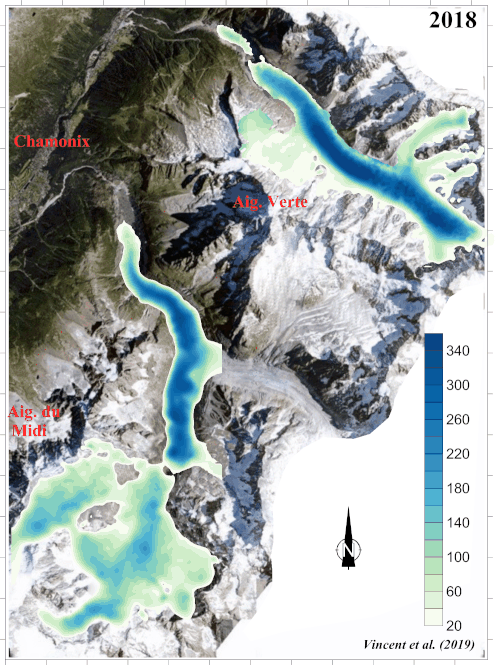
Key points to remember:
- To fully understand the links between climate and glaciers, we have to measure and analyze the surface mass balance of the entire glacier on decadal scales to analyze robust trends.
- Although we know a lot about the advancement of glaciers, it remains difficult, in most cases, to establish a continuous, reliable and precise chronology of glacier retreat over the last millennia.
- Since the end of the 19th century, glaciers all around the world have lost mass and retreated. Thanks to several scientific studies analyzed by the IPCC we can say, with a high degree of confidence, that glaciers in almost all regions of the world have continued to shrink.
- Glaciers have experienced natural fluctuations over the past centuries and millennia, and orders of magnitude of mass loss were probably close than those observed today. But the time scales and extent of the fluctuations seen nowadays are far from the ones observed during the rest of the Holocene. Over the past decades, the retreat of glaciers is due, with a very high level of confidence, to global warming.
- Regardless of the climate scenario, the future of glaciers is partly locked-in due to the inertia of the climate system and the very slow response time of glaciers to climate change. Therefore, their disappearance will continue irreversibly until the middle of the 21st century. Future evolutions for the second part of the century will depend on the trajectory of greenhouse gas emissions, which depend on actions taken today.
Bonus : a great infography on the CNRS website !
Sources:
– Summary for policy makers of the IPCC SROCC report
– Chapter on High Mountain Areas (SROCC)
– Shrinking of the two largest glaciers in the French Alps during the 21st century: Argentière and Mer de Glace, La Météorologie, Series 8, 106, 49-58, 2019

